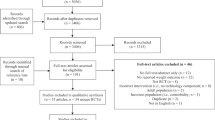Abstract
Adult and childhood obesity and related adverse outcomes are most common among racial/ethnic minorities and socio-economically disadvantaged populations in the United States. Research approaches to obesity developed in mainstream populations and deploying new information technologies may exacerbate existing disparities in obesity. Current obesity management and prevention research priorities will not maximally impact this critical problem unless investigators explicitly focus on discovering innovative strategies for preventing and managing obesity in the disadvantaged populations that are most affected. On the basis of our research experience, four key research approaches are needed: (1) elucidating the underlying social forces that lead to disparities; (2) directly involving community members in the development of research questions and research methods; (3) developing flexible strategies that allow tailoring to multiple disadvantaged populations; and (4) building culturally and socio-economically tailored strategies specifically for populations most affected by obesity. Our experience with a community-based longitudinal cohort study and two health-center-based clinical trials illustrate these principles as a contrast to traditional research priorities that can inadvertently worsen existing social inequities. If obesity research does not directly address healthcare and health-outcome disparities, it will contribute to their perpetuation.
This is a preview of subscription content, access via your institution
Access options
Subscribe to this journal
We are sorry, but there is no personal subscription option available for your country.
Buy this article
- Purchase on Springer Link
- Instant access to full article PDF
Prices may be subject to local taxes which are calculated during checkout


Similar content being viewed by others
References
Wang Y, Beydoun MA . The obesity epidemic in the United States—gender, age, socioeconomic, racial/ethnic, and geographic characteristics: a systematic review and meta-regression analysis. Epidemiol Rev 2007; 29: 6–28.
Flegal KM, Carroll MD, Ogden CL, Curtin LR . Prevalence and trends in obesity among US adults, 1999–2008. JAMA 2012; 303: 235–241.
Center for Disease Control and Prevention.. National Diabetes Fact Sheet: National Estimates and General Information on Diabetes and Prediabetes in the United States. U.S. Department of Health and Human Services, Center for Disease Control and Prevention: Atlanta, GA, 2011.
Ogden CL, Carroll MD, Curtin LR, Lamb MM, Flegal KM . Prevalence of high body mass index in US children and adolescents, 2007–2008. JAMA 2012; 303: 242–249.
Ogden CL, Lamb MM, Carroll MD, Flegal KM . Obesity and Socioeconomic Status in Adults: United States, 2005–2008. NCHS Data Brief, Number 50. National Center for Health Statistics: Hyattsville, MD, 2010.
Ogden CL, Lamb MM, Carroll MD, Flegal KM . Obesity and Socioeconomic Status in Children and Adolescents: United States, 2005–2008. NCHS Data Brief, Number 51. National Center for Health Statistics: Hyattsville, MD, 2010.
Lovasi GS, Hutson MA, Guerra M, Neckerman KM . Built environments and obesity in disadvantaged populations. Epidemiol Rev 2009; 31: 7–20.
Spiegel AM, Alving BM . Executive summary of the Strategic Plan for National Institutes of Health Obesity Research. Am J Clin Nutr 2005; 82: 211S–214S.
Braveman P . A health disparities perspective on obesity research. Prev Chronic Dis 2009; 6: A91.
Minkler M . Linking science and policy through community-based participatory research to study and address health disparities. Am J Public Health 2010; 100 (Suppl 1): S81–S87.
Eskenazi B, Marks AR, Bradman A, Harley K, Barr DB, Johnson C et al. Organophosphate pesticide exposure and neurodevelopment in young Mexican-American children. Environ Health Perspect 2007; 115: 792–798.
Warner ML, Harley K, Bradman A, Vargas G, Eskenazi B . Soda consumption and overweight status of 2-year-old mexican-american children in california. Obesity (Silver Spring) 2006; 14: 1966–1974.
Rosas LG, Guendelman S, Harley K, Fernald LC, Neufeld L, Mejia F et al. Factors associated with overweight and obesity among children of Mexican descent: results of a binational study. J Immigr Minor Health 2011; 13: 169–180.
Rosas LG, Harley K, Fernald LC, Guendelman S, Mejia F, Neufeld LM et al. Dietary associations of household food insecurity among children of Mexican descent: results of a binational study. J Am Diet Assoc 2009; 109: 2001–2009.
Ma J, Lee KV, Berra K, Stafford RS . Implementation of case management to reduce cardiovascular disease risk in the Stanford and San Mateo Heart to Heart randomized controlled trial: study protocol and baseline characteristics. Implement Sci 2006; 1: 21.
Ma J, Berra K, Haskell WL, Klieman L, Hyde S, Smith MW et al. Case management to reduce risk of cardiovascular disease in a county health care system. Arch Intern Med 2009; 169: 1988–1995.
Berra K, Ma J, Klieman L, Hyde S, Monti V, Guardado A et al. Implementing cardiac risk-factor case management: lessons learned in a county health system. Crit Pathw Cardiol 2007; 6: 173–179.
Drieling RL, Ma J, Stafford RS . Evaluating clinic and community-based lifestyle interventions for obesity reduction in a low-income Latino neighborhood: Vivamos Activos Fair Oaks Program. BMC Public Health 2011; 11: 98.
Knowler WC, Barrett-Connor E, Fowler SE, Barrett-Connor E, Fowler SE, Hamman RF et al. Reduction in the incidence of type 2 diabetes with lifestyle intervention or metformin. N Engl J Med 2002; 346: 393–403.
Acknowledgements
This report was supported by a research grant (LGR, RSS R01 HL 089448) and a mid-career mentoring award (RSS, K24 HL086703), both from the National Heart, Lung, and Blood Institute. Publication of this supplement was partially supported by Nutrilite Health Institute with an unrestricted educational contribution to Stanford Prevention Research Center.
Author information
Authors and Affiliations
Corresponding author
Ethics declarations
Competing interests
RS Stafford received consulting fees from Mylan Pharmaceuticals as an expert witness. LG Rosas declares no conflict of interest.
Rights and permissions
About this article
Cite this article
Rosas, L., Stafford, R. Practical research strategies for reducing social and racial/ethnic disparities in obesity. Int J Obes Supp 2 (Suppl 1), S16–S22 (2012). https://doi.org/10.1038/ijosup.2012.5
Published:
Issue Date:
DOI: https://doi.org/10.1038/ijosup.2012.5
Keywords
This article is cited by
-
Obesity Interventions in the Community
Current Obesity Reports (2014)


